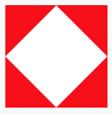20th Australian Employment Company
From Our Contribution
 Unit Colour Patch | |
Brief History
Also known as 20th Australian Labour Company, and 20th Australian Works Company. In June 1942 the 18th, 19th, and 20th Labour Companies were formed at Randwick Racecourse in NSW with suitable men from the 1st and 2nd Infantry Divisions. In August they moved to North Sydney and in October were renamed 20th Employment Company. Their next move was to Queensland in December 1942 with the Company HQ and 4 Platoon working supply dumps in Townsville, 1 Platoon at Cairns working on the wharf, 2 Platoon at Innisfail and 3 Platoon at Atherton.
In March 1943 they all came together and moved to Milne Bay in Papua to work the wharf. In April, 1 & 4 Platoons went to Goodenough Island. In July the Milne Bay unit was working on engineering works while the Goodenough Island unit moved to Buna. In January 1944 the unit concentrated at Buna where they were renamed 20th Australian Works Company in April.
In October 1944 the Company left Papua, and after leave concentrated at Gaythorne in Queensland before moving to Chermside in April 1945. From there they worked around Brisbane until the end of the war.
Unit Personnel
- Richard William Dowell 24 Sep 1945 - 25 Oct 1945
Notes
During the Second World War, the Australian Army established 39 Employment Companies, totaling by war’s end about 15,000 men. While the name of these army units occasionally varied – Employment Company, Labour Company, Works Company, Labour Unit, Labour Corps – their function did not. They were established to ensure that the Australian Defence Force had a large corpus of soldiers dedicated to essential labouring tasks, the hard physical labour needed to maintain the war effort and support the fighting forces. Of the 39 Companies, 11 were in part or whole made up of ‘aliens’, non-British citizens.
The ‘alien’ companies were not armed. Soldiers without guns, they camped at places like Tocumwal and Albury on the New South Wales/Victorian border, where an earlier history of State rivalry led to the stupidity of differing rail gauges. There they worked on the trains, loading and unloading military supplies, including foodstuffs and armaments. Across the country, parties of Employment Company soldiers were directed to factories for packing and transporting goods; others worked on the wharves, repaired roads, drove trucks loaded with military equipment. In the words of a journalist, ‘Men who were not allowed to carry arms spent their days loading bombs on trucks.’ Some of the Chinese in the 7th Company worked in the mines in Queensland and later ended up under the control of the US military. A number of the Koepangese from the 23rd Company became members of the sabotage units in Z Force, sent to report on and infiltrate Japanese-occupied Timor.
Brief History content has come from The Unit Guide - Volume 6 - The Australian Army 1939-1945 , pages 6.141 & 6.142 - Graham R McKenzie-Smith - Big Sky Publishing - 2018